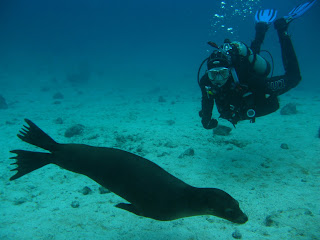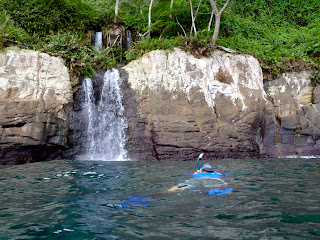
DAY 2 TO GO OR NOT TO GO 2810 nautical miles to go
Overall although there are only 2 of us we manage to keep good night watch. We back everything up using the radar and place a warning zone on the screen. We have played with the gain to find a setting that disregards wave returns and only shows other vessels, large objects and heavy weather. If any of these enter the guard zone a loud warning alerts us. We have it set far enough around us that there is time to take avoiding action around (20 minutes). If it is another ship we will adhere to the rules but if there is a risk of collision we start the engine and take avoidance as required (assuming we cannot sail around them). If it is an object we sail up current/swell around it and for weather we look where it is running and try and go around the back-occasionally we go in front and try to outrun it. So far apart from an extremely near experience 4 weeks ago(Ian ended calling a mayday to get the attention of the watch keeper who tried to run us down in a huge fishing trawler at midnight) we are having real success with the radar. Unfortunately last night the radar stopped working and we had to turn the power off and on to get it going again. Lets hope this is not a regular occurence.
Todays big drama involved the generator. We have 9 batteries on Faraway 6 are for general services-lights, pumps, fridge, freezer, autopilot, radar etc. We do not have solar or wind generators(unfortunately). We only have the engine driven alternator and a seperate generator connected to the charger. If 1 system is broken we can use the other to provide battery charging. The generator uses less fuel, is quieter etc so that is the preferred method. Last night we used a lot of battery power and so they were close to minimum. (Ian prefers not to charge during the night as it is easy to identify changes to the wind , swell, weather, sail problems etc...when there is no background noise). This morning at sunrise Ian tried to start the generator but it just cranked over without fully lighting. We always check the sea strainer (the strainer is where sea water enters the boat and goes to the generator or engine to provide cooling before being dumped back in the sea) as if it is blocked the generator will not start as it may overheat. To Ian's surprise there looking up at him was a 10cm by 3 cm fish-dead fully blocking the inlet. Ian cleaned it out and tried again. No start. After much studying of manuals and checking parts Ian had no answer. The fuel prefilter was clean-no water in the fuel etc. When he tried to bleed air and fuel from the bleed valve there was no fuel After checking the fuel pump etc... Ian reluctantly changed the primary fuel filter. After much cranking and opening of 1 injector valve the generator started. We ran it for 6 hours-allowing us to fully replenish our fresh water supplies via the watermaker.
THE BIG QUESTION. WHEN THE GENERATOR DID NOT WORK WE THOUGHT IT WOULD REQUIRE A SPECIALIST. DO WE GO WITH ONLY 1 FORM OF POWER OR MOTOR BACK AGAINST THE SWELL AND WIND TO GALAPAGOS-TOUGH CALL. Lucky Ian fixed it. We look forward to being midway to the Marquisasa then we will not have to make decisions like that.
We saw many large fishing boats-they were towing a caravan of smaller brightly painted boats behind them-very pretty, Difficult to see on radar so we think they are old wooden boats.
The remainder of the day went well although after spending hours in the engine bay covered in diesel in a rolly swell Ian felt nausea for the next 12 hours.
Sheryl did the cooking. Roast chicken with all the trimmings ate from a huge bowl. It took her 2 hours pinned against the cabinets and counter fighting the roll to prepare the feast.
We ate as the sun went down-lovely sunset on the right quarter but black storm clouds and showers to the left-`could be an intersting night. Overall the night sail was smooth until 3am when the sails started flapping shortly followed by the radar alarm.. A quick look at the radar confirmed a fast moving squall headed our way. We were sailing too close to the wind to turn left and go around it so we reefed the genoa and turned right hoping to outrun it. Despite reducing sail the change in direction and increased wind quickly pushed us from around 6 knots to 9 knots. It worked we out ran the squall and saw it pass behinhd-thereafter we continued back on a similair heading as before with speeds of 7-8 knots.
If we keep this up then we should complete the journey in 20 days.






















































